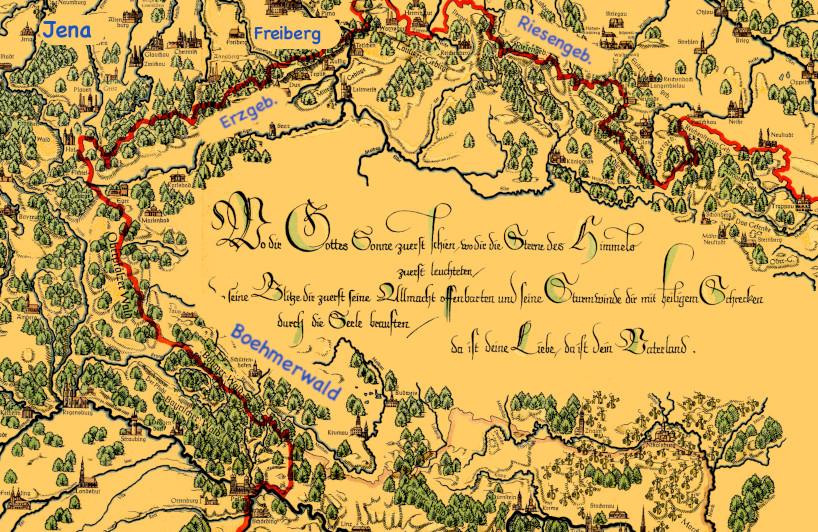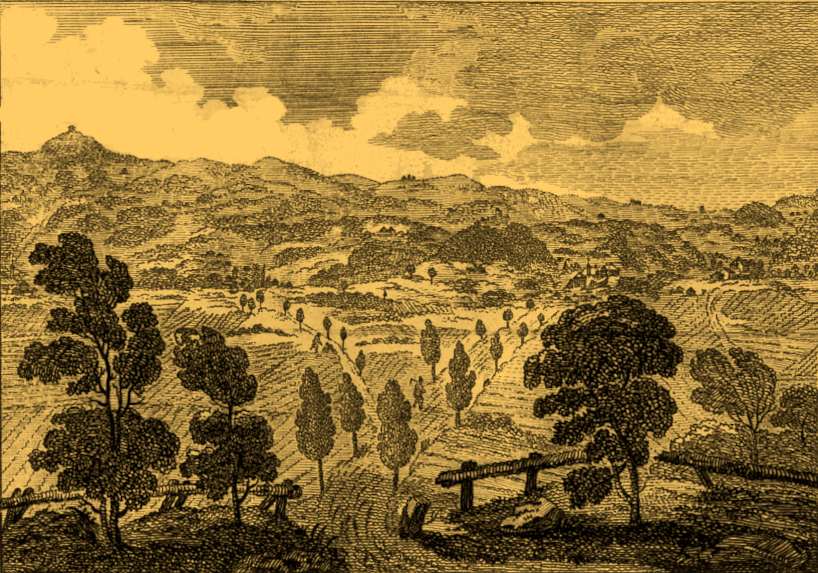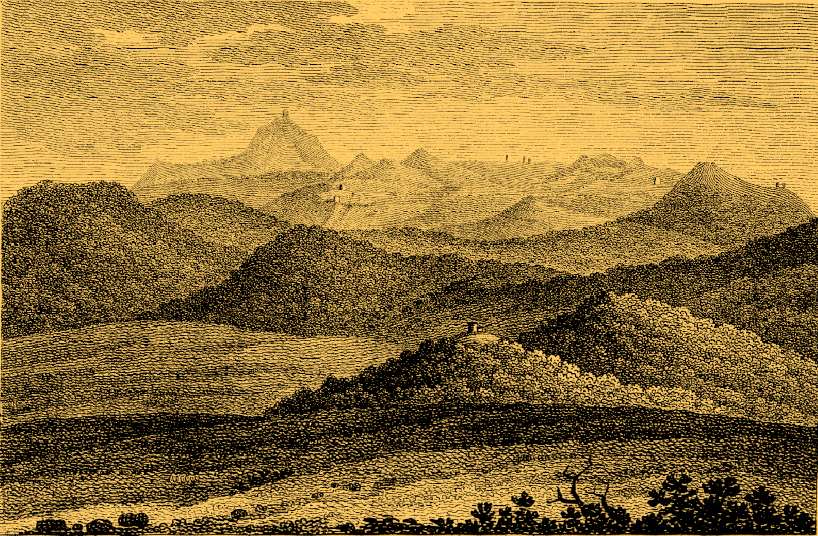271a. Henrik Steffens to Wilhelm Schlegel in Braunschweig: Freiberg, October 1800 [*]
Freyberg, October 1800
Please forgive me, my dear friend, for answering a letter so late that in fact deserved a quick response. I made it to Freyberg later than I anticipated, and then only for a couple of hours before commencing a mountain journey. For almost three weeks now, I have been in the Bohemian and Silesian mountain ranges, arriving back here only yesterday, so let me hasten to answer you. [1]
I must, however, preface what I say by pointing out that I have brought back with me a swollen, inflamed cheek that is truly tormenting me and whose influence may well extend to this letter as well.
I am pleased to hear that finally a journal will be published of the sort demanded by our age and the disposition of our sciences. [2] It is the only means of dispelling the old, hostile demon and satanesques. One might also hope to see it render superfluous all those one-sided attempts to come up with something better that in fact merely attest to the weakness of their authors and the paltry nature of their insights.
One can easily see what might be expected from a work such as this undertaken by the very men who themselves are contributing the most toward bringing about this sort of salutary revolution. It will be a true history of the new age, written by the primary participants themselves.
You can well imagine what a pleasure it is for me to be invited to participate in such a venture. I will make every effort with my contributions. If I am indeed able to deliver anything of use, it will no doubt be the company with whom I am working that inspires me, and the spirit of the journal itself that animates me and prompts all my contributions to seek higher and bolder flight.
I will indeed most prefer to present a survey of the entirety of nature from the perspective I chose earlier. . . . Hence I will definitely work out a survey of the current status of geology, i.e., of what has been presented in the way of a theory of the earth; but a theory of the earth encompasses the entirety of nature.
The first thing I would like to contribute is a continuation of my review (though I may conceive it differently), an overview of Schelling’s most recent ideas. [3] That much I can promise for the first volume. Many of these ideas concur so wondrously with my own that this overview can thus be viewed as an introduction to everything I would contribute later.
Please give my regards to your wife. Concerning the event that has also shaken me — please permit me simply to remain silent. [4]
I am assuming that Schelling is now in Jena, at least I must conclude as much from a letter from Gries, whom I met on arrival here. [5] I have much to write to him and hence would like to know where he is residing. [6] My Beyträge are being printed just now. [7] Hence I will be staying here for the time being and have now also pushed everything aside that I may live completely for my sacred occupation. My geognostic excursions, which were the most disruptive element, have now been concluded.
Please pass along my regards to your brother as well.
Your friend,
H. Steffens
Notes
[*] Source: Körner (1930), 1:118–19. — There seem to be no extant letters from Wilhelm to Steffens. Back.
[1] That is, Steffens had been out in the field doing geological research, including in the Bohemian Forest as in this illustration (Josef Wenzig and Johann Krejči, Der Böhmerwald: Natur und Mensch, illustrated by Eduard Herold [Prag 1860], 59):

The locales: (1) The Bohemian Forest (Böhmerwaldgeb[irge] in the illustration below; a wooded mountain range between Bavaria and Bohemia), along with (2) the Silesian Riesengebirge (the Giant Mountains, a mountain range on the boundary between Bohemia and Silesia) and (3) the Erzgebirge (the Ore Mountains, a mountain range on the boundary between Saxony and Bohemia), form a C-shaped arc along the border between present-day Germany, the Czech Republic, and Poland (Rudolf Koch and Fritz Kredel, Deutschland und angrenzende Gebiete [Leipzig 1937]):

Here the Riesengebirge in 1796 and 1816 ([1] Berlinischer Almanach zum Vergnügen und zur Verbreitung nüzlicher Kenntniße für 1796; Inhaltsverzeichnis deutscher Almanache, Theodor Springmann Stiftung; [2] Johann Heinrich Fritsch, Taschenbuch für Reisende ins Riesengebirge [Leipzig 1816]):


Concerning Steffens’s professional obligations and activities in Freiberg during this period, and during the summer of 1800 specifically, see Richard Petersen, Henrik Steffens: Ein Lebensbild, trans. Germ. Al. Michelsen (Gotha 1884), 118–19 (illustration: Carpathian Mountains, in Carl Kořistka , Die Hohe Tatra in den Central-Karpaten eine geographische Skizze verfasst auf Grundlage einer Bereisung [Gotha 1864], 22):
Steffens’s stay in Freiberg encompassed a period of two years, from the summer of 1799 to the summer of 1801, though he spent a good portion of this time on lengthier or shorter excursions. He frequently journeyed to Dresden, which travelers have always found so attractive . . .
During the summer of 1800, Steffens went on several journeys into various mountain ranges, in part to the nearby Erzgebirge, in part further afield to Tyrol [in western Austria] and the western Carpathians [mountain range in central Europe extending from the former Czechoslovakia to central Rumania].

If for no other reason, he was obliged to go on these journeys out of consideration for the Danish government and their wishes [who were funding Steffens’s stay in Germany]. During this entire summer, he spent hardly fourteen quiet days at a time in Freiberg itself, as he wrote to Schelling. Back.
[2] Wilhelm’s anticipated Jahrbücher der Kritik, which never got off the ground but continued to occupy members of the circle. Among previous letters, see Schleiermacher’s letter to Wilhelm on 29 August 1800 (letter 267a), Fichte’s letter to Wilhelm on 6 September 1800 (letter 267c), and Wilhelm’s letters to Schleiermacher on 8 September 1800 (letter 267d) and 5 October 1800 (letter 269b). Concerning the entire ill-fated project, see esp. Rudolf Haym’s essay on the Romantics’ Jahrbücher project. Back.
[3] Steffens’s review of three of Schelling’s more recent works, “Recension der neuern naturphilosophischen Schriften des Herausgebers,” Zeitschrift für spekulative Physik I/1 (1800) 1–48; I/2 (1800) 88–121; see Schelling’s “Declaration in the Intelligenzblatt of the Allgemeine Literatur-Zeitung” on 2 November 1799 (letter 252d), note 2. Back.
[4] Auguste’s death on 12 July 1800 in Bocklet; concerning the initial news, see Wilhelm’s letter to Goethe on 20 July 1800 (letter 265d). Concerning Steffens’s initial reaction, see his letter to Schelling on 8 or 20 August 1800 (letter 265l). Back.
[5] Johann Diederich Gries had traveled back to Jena from Bamberg with Schelling (part of the way also with Wilhelm and Caroline), leaving Bamberg on 1 October 1800 and arriving in Jena on 3 October; concerning these travel plans, see Caroline’s letter to Luise Gotter on 18 September 1800 (letter 268), note 1. Concerning Gries’s itinerary over the past year and his time in Bamberg after Auguste’s death, see supplementary appendix 268.1, esp. with note 1.
Elise Campe, Aus dem Leben J. D. Gries, 48–49, does not mention Gries’s trip to Freiberg in her account, mentioning Steffens again only in connection with the New Year’s Eve celebration that year in Weimar, an account of which recurs later in these letters (see Caroline’s letter to Schelling in early January 1801 [letter 279]). Back.
[6] Compare the tone of this letter with Steffens’s virtually simultaneous (18 October 1800) letter to Schelling (letter 271b), which also addresses Schelling’s catastrophic withdrawal from Wilhelm’s projected journal. Back.
[7] Henrik Steffens, Beyträge zur innern Naturgeschichte der Erde, vol. 1 (Freyberg 1801). Back.
Translation © 2014 Doug Stott
